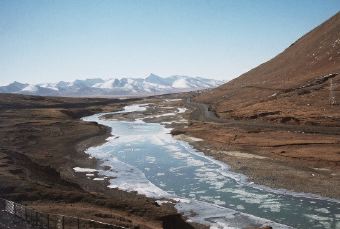 Rivers with floating ice were commonplace.
Rivers with floating ice were commonplace.
SoftDawn |
Train Across Tibet |
Lanzhou |
Plateau 1 |
Plateau 2 |
Plateau 3 |
Lhasa
Generally the country along the railway was a broad plain flanked by mountains 2000 to 3000 feet high with icy rivers and lakes.
 Rivers with floating ice were commonplace.
Rivers with floating ice were commonplace.
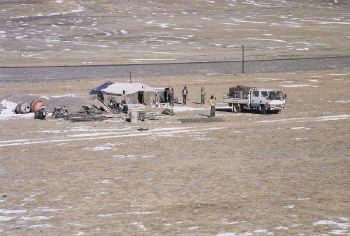 A substantial tent beside the highway.
A substantial tent beside the highway.
This appears to be a construction depot, or a road maintenance site.
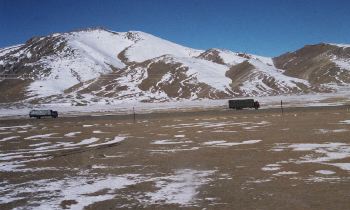 The railway followed the road for a lot of the way which is not surprising when you think
about it. When the road was built its route would have been chosen to follow the least
difficult terrain. Therefore it could be expected the trainline would follow the same
route. Nevertheless, since the road was built there have been massive improvements in earth
moving equipment and construction techniques.
The railway followed the road for a lot of the way which is not surprising when you think
about it. When the road was built its route would have been chosen to follow the least
difficult terrain. Therefore it could be expected the trainline would follow the same
route. Nevertheless, since the road was built there have been massive improvements in earth
moving equipment and construction techniques.
The railway moved away from the road for a few hours in the afternoon.
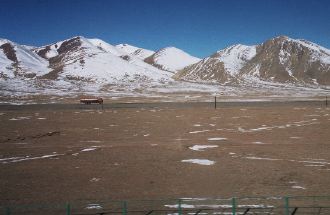 Unlike the Nullabor Plain in Australia where you can drive for hours without seeing another
vehicle, on the road to Lhasa trucks carrying their loads were a steady sight. The trucks
would supply the towns along the road and inland and would carry goods to Lhasa.
Unlike the Nullabor Plain in Australia where you can drive for hours without seeing another
vehicle, on the road to Lhasa trucks carrying their loads were a steady sight. The trucks
would supply the towns along the road and inland and would carry goods to Lhasa.
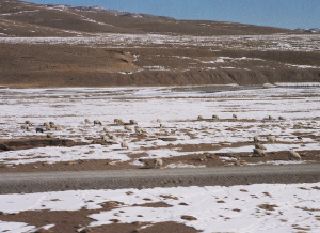 A flock of sheep beside the road.
A flock of sheep beside the road.
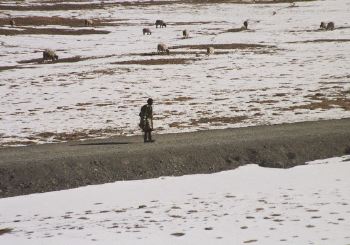 The shepherd taking advantage of the smooth road surface.
The shepherd taking advantage of the smooth road surface.
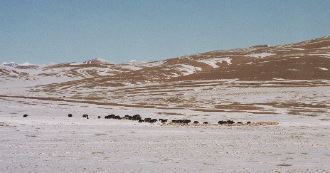 A herd of yaks and a flock of sheep together.
A herd of yaks and a flock of sheep together.
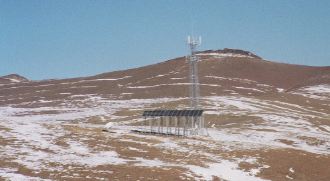 Modern solar powered infrastructure provided by the railroad.
Modern solar powered infrastructure provided by the railroad.
In addition to yaks and sheep, wild life was observed. A small group of wild deer was seen, as were hawks and other birds.
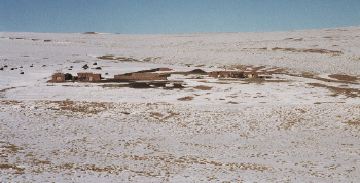 A small isolated collection of buildings with yaks out the back.
A small isolated collection of buildings with yaks out the back.
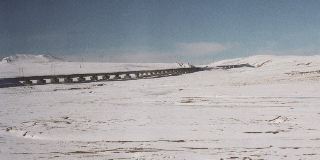 Elevated track above the snow.
Elevated track above the snow.
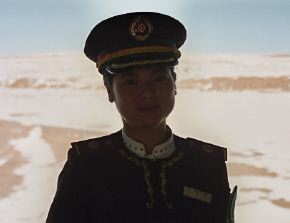 One of our train conductors.
One of our train conductors.
The train appeared to be just a modern Chinese train. In appearances it wasn't very different to other Chinese trains, although we knew it be of special construction to handle the extreme conditions. Two differences stood out:
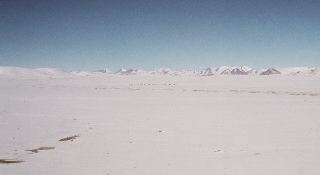 As we made our way south (still well above 4000 m on the LCD display) the countryside became
snow covered.
As we made our way south (still well above 4000 m on the LCD display) the countryside became
snow covered.
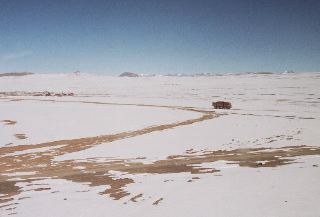 A truck making its way through the snow.
A truck making its way through the snow.
Reportage of the day-long train journey across the Tibetan Plateau has been broken into 3 pages to make it more digestible. You can reach Plateau 1 and Plateau 3 by clicking on these links, or on the tags at the top, or bottom, of this page.
SoftDawn |
Train Across Tibet |
Lanzhou |
Plateau 1 |
Plateau 2 |
Plateau 3 |
Lhasa